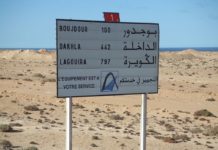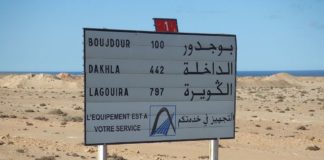Over the last few weeks, Catalonia and Spain have occupied the headlines of the main international newspapers. At the core of the worst institutional crisis since Spain turned a democracy lies the question of whether Catalonia has the right to self-determination.
On the one side of the debate there are those – including the Catalan government – who claim that Catalonia, which possesses a distinct language, culture and heritage, should have the right to decide whether it wants to remain within Spain or form an independent republic. On the other side we find those – including the Spanish government – who claim that Catalonia does not have the legal right to decide its future because firstly the Spanish Constitution only recognises one nation – the Spanish nation – and secondly it establishes that such a nation is indivisible.
One key question that emerges from this debate is whether the right of a region or community to self-determination needs to be enshrined in a Constitution in order for it to exist. To be sure, most Constitutions do not incorporate a precept allowing a region of the national territory to break away if its population decides so. But even where this right is recognised, the mere existence of a constitutional basis does not necessarily render the rules of a referendum on self-determination uncontested; for this to happen both parties in dispute must be in agreement over such rules.
The above could easily lead to the conclusion that referendums on self-determination are almost impossible to take place or that at the very least they are extremely rare. However, two comprehensive studies on this subject point in the opposite direction. The first of these two studies, published in 2017 by Micha Germann of the University of Zurich, uses data from the Contested Sovereignty dataset to conclude that a total of 360 referendums on self-determination took place between 1776 and 2015.
Germann defines a ‘self-determination referendum’ in a broad sense, namely “as direct popular votes that deal with a specific form of sovereignty reallocation, namely whether a region within a state should gain partial self-rule in the form of internal autonomy or secede outright and either establish a state of its own or merge with its cultural motherland.” Germann then adds that “the number of SD referendums has increased tremendously over time. In the more than 150 years between the end of the 18th century and 1944, the world saw a total of 86 SD referendum events. By contrast, the 70 years since 1945 saw more than thrice the number of SD referendums: 274, or more than 75% of the total number of SD referendums held since 1776. The last 30 years alone account for more than 160 SD referendums, or 44% of the total number.”
Meanwhile, in a previous study published in 2015 in the French Journal of British Studies, Matt Qvortrup of the University of Cranfield (UK) used data from the Centre for Research on Direct Democracy to conclude that a total of 56 referendums on independence were held between 1860 and 2015. Of these, “50 have been held after 1944. But the vast majority of these (39 in total) were held after 1990.” Qvortrup does not provide a definition nor does he explain – other than through examples – what constitutes an independence referendum, however it seems reasonable to see it as a sub-set of what Germann calls a self-determination referendum. This would explain why Germann identifies a much larger number of self-determinatiom referendums than Qvortrup does of independence referendums.
Qvortrup further notes that the reasons behind the independence referendums which took place after World War II are manifold and cannot be attributed to a single development or phenomenon: thus, some took place in the context of decolonisation (e.g. Cambodia, Western Samoa and Guinea), others took place in the aftermath of the collapse of the Soviet Union (e.g. Baltics, Central Asia, Caucus) or in the context of the disintegration of the former Yugoslavia (e.g. Macedonia, Croatia, Bosnia), while others were the result of geopolitical reasons (e.g. Mongolia) or the culmination of conflict and negotiations (e.g. Algeria, Eritrea, South Sudan).
But referendums on independence have also taken place in Western countries and democracies. Norway, for instance, voted to secede from Sweden in 1905; Iceland and the Faroe Islands held referendums in 1944 and 1946, respectively, to secede from Denmark; Malta held a referendum in 1964 on a new constitution which was effectively a referendum on independence from the UK; Puerto Rico held a referendum in 1993 for a new status with the US; Quebec voted to secede from Canada in 1995; and more recently, in 2014, Scotland held a referendum on independence from the UK.
The above therefore tells us that referendums on independence are not such an anomaly. Moreover, in most instances the right to hold this type of referendum was not even enshrined in local legislation – the UK, for instance, does not even have a constitution – but was the result of either conflict or negotiation between the parent country and the seceding region. Similarly, where agreed the rules were not always the same and while in some cases a supermajority vote was required for the referendum to be successful (e.g. Montenegro in 2006 and South Sudan in 2011) in other cases a simple majority was deemed sufficient (e.g. Scotland in 2014).
Additional Resource: see Referendums Infographic.




























